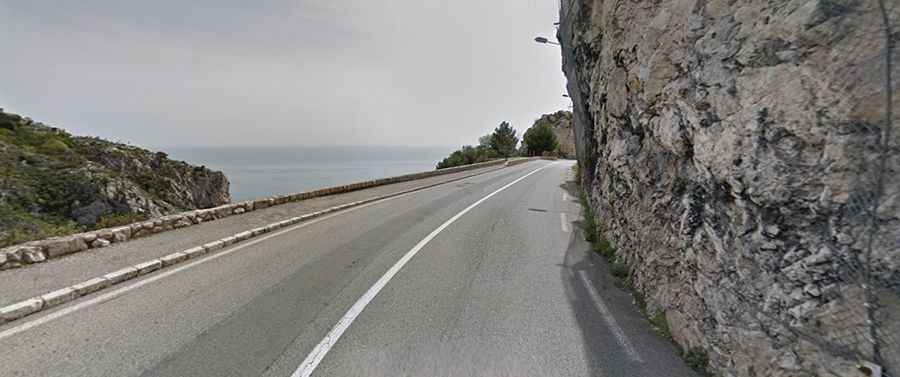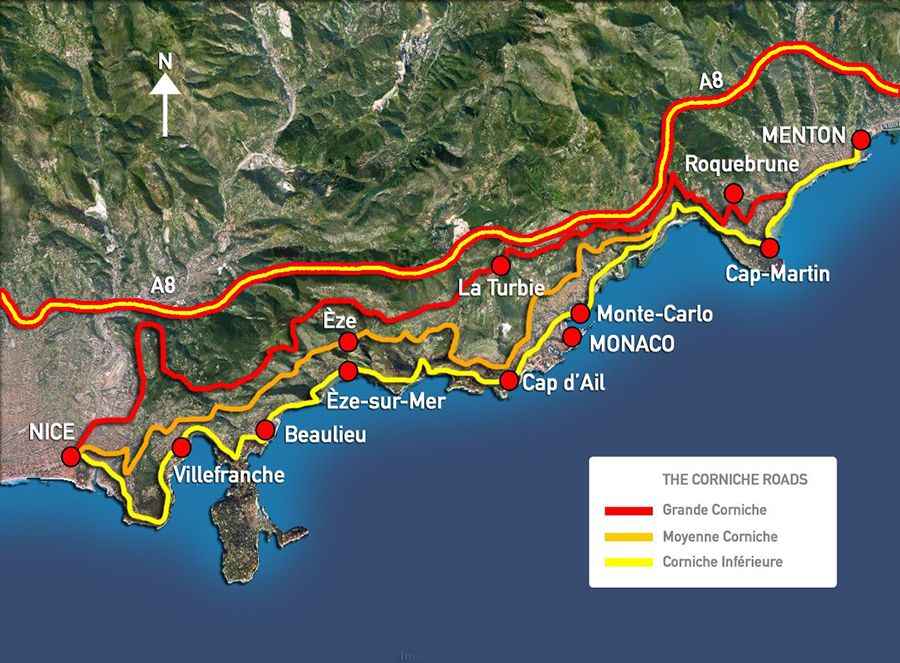The Three Corniches are 3 roads with dramatic coastal views in Cote d'Azur
From Nice eastward toward Menton, in the south of France, in the beautiful Côte d'Azur, three roads known as Les Trois Corniches are carved into the mountainside, running between the sea and mountains and offering dramatic coastal views. They are some of the world’s great drives.

What are The Three Corniches?
The Corniche Roads of the French Riviera, with a distance of about 20 miles whichever one you try, are three different routes following the mountainous stretch from Nice to Menton and creating one of the most dramatic and inspiring views in Europe. From the 19th century onwards, engineers built not one but three scenic highways, running in parallel. Carved into the mountainside are three roads: the Grande Corniche at the top, the Moyenne Corniche in the middle, and the Basse Corniche (or Corniche Inferieure) along the coast. In summers, the traffic is very heavy. The roads have been immortalized in many famous movies, chosen for their breathtaking views, inspiring legendary films such as How to Catch a Thief directed by Alfred Hitchcock and starring Grace Kelly and Cary Grant, Grace of Monaco with Nicole Kidman, and several James Bond movies. The Basse Corniche and the Moyenne Corniche are busy roads - mundane commuter traffic into Monaco for the most part, and the Haute is not busy - it doesn't actually go anywhere.
Grande Corniche
The Grande Corniche (sometimes called the Corniche Superieure) is the M2564 road. Built by Napoléon I, the journey with stunning scenery follows the Via Julia Augusta from Nice to Roquebrune-Cap-Martin. It’s the highest of the three roads, rising to more than 1,500 feet (on average 500 feet above sea level). While a certain prudence is required, it is more elegant than scary. They always use it in car ads. Driving along this winding road with breathtaking views over the coastline will give you a touch of freedom. It’s said to be the most dangerous to drive. Alfred Hitchcock filmed parts of To Catch a Thief here in the fifties, and in 1982, Princess Grace met her death here in a car accident. It has staggering views and a historical pedigree. But not only is it the least safe driving-wise (in some spots barely wide enough for two cars to pass), its altitude also often means a whitewash of fog, which does a driver no favors. Confident drivers wishing to see the Cote d'Azur at its most unspoiled will want to take this road – but only on the clearest of days.
Moyenne Corniche
Located halfway up the slope, the Moyenne Corniche is the M6007 road. Built between 1910 and 1928, it’s the middle road. The views are no less spectacular, and it's the fastest road if you're in a hurry. Cut through rock, the road takes drivers from Nice past the Col de Villefranche (149m), Èze, and Beausoleil. Being one of the world’s most famous and most scenic roads, it’s an accident black spot, possibly due to rubbernecking tourists gazing at the tremendous views. Culminating at 472 meters above sea level, the road offers impressive views of the sea and the towns above. It sits in altitude between the upper and the lower.
Basse Corniche
Located down by the sea, the Basse Corniche (sometimes called the Corniche Inferieure) is the M6098 road. This clogged coastal road runs along the coast and offers seaside serenity in the form of pretty beach towns. It's a true mountain corniche, rising several feet above the sea in places. Built in the 1860s, the road passes through the towns of Villefranche-sur-Mer, St-Jean-Cap-Ferrat, Beaulieu-sur-Mer, Èze-sur-Mer, and Cap d’Ail. With blue seas and glamorous congestion, it is fine if you are not in a hurry. This road goes along the coast, often side-by-side with the train line.
